Disclosure: Meeple Mountain received a free copy of this product in exchange for an honest, unbiased review. This review is not intended to be an endorsement.
“Gosh, those worms look a LOT like the worms from Dune.”
“Do you think the game had a totally different theme, then the folks at the publisher saw Dune, then thought ‘I think we might want to rebrand this thing into something…else…’”
The lines kept coming. The best I could do was continue the teach. Sand (2024, Devir Games) is a pick-up-and-deliver game where players take on the roles of desert-based factions trying to make something out of a desperate situation by moving goods from town to town to make the most money by the end of play.
But featured front and center on the box and as the main feature in the game’s mechanics? A big fat worm. Players must manage the worm’s health (tracked with water, food and health trackers) while grabbing boxes of plants and other limited items and throwing them on the back of their worm to get things from place to place.
That worm and the associated game world reminded all the people who joined me at the table of the worms from, ahem, a recent sci-fi blockbuster film series based on a popular book. Smart marketing? Certainly. Lucky timing? Absolutely. There’s no denying that a lot of the game’s theme lines up perfectly with the movies that have graced theaters of late.
I thought the movies were pretty good. How about this game?
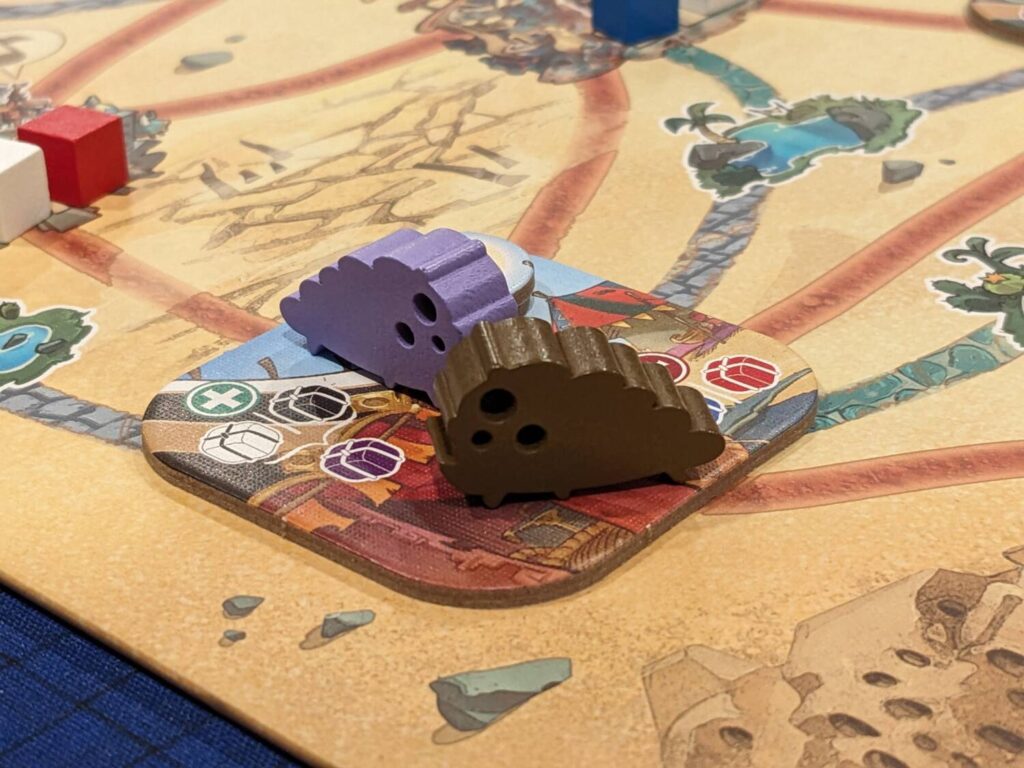
This Worm Needs a Bigger Saddle
Sand is a 1-4 player pick-up-and-deliver game with a not-so-subtle hint of area control. Over the course of 5-6 rounds (depending on player count), players track the health of their worm while picking up goods that will be delivered to various spots on the map to gain cash. Delivered goods are not returned to the supply. Instead, goods (represented by standard wooden cubes) are placed on a player’s personal board, which triggers bonuses for each covered space on a track for that type of good.
Players will slowly upgrade the quality of their worm—both its looks and its efficiency, traveling for less water/food/health each time it is upgraded—while also unlocking companions that provide additional bonuses to make almost everything in the game a little easier. At the end of play, the person with the most money wins.
Each round, the first player rolls four of the chunkiest six-sided dice I’ve handled this year. (And look, Devir knows dice, right?) Those dice values—spread across the four dice, one each in black, blue, red and white—are public and shared, so all players have access to the same die values for an entire round of three turns per player.
The dice drive all the actions. Want to travel? You need a die of a certain value, any color. Want to pick up goods? You have to spend your blue action token to pick up a blue good from your worm’s current location. If you want to boost your water or food track, you boost it by the value of the blue or red die by the number of pips, respectively.

And then you can boost all your actions with another track on your player mat, known as prayers. One prayer equals one extra pip spent on an action. You can also spend cash to boost the value of a die…but cash equals end-game points, so you are spending your victory condition to make an action a little sweeter. This rule gives a nice weight to almost everything in the game.
Still, the thing I enjoyed most here is Sand’s action selection mechanic. To simulate the fact that your worm is taking on more and more weight with goods you’ve picked up on the map, actions become very limited, doubly limited by the color of the dice you’ll be able to use to take future actions. To begin the game, you have access to three of your four action slots, but you’ll quickly find a way to get four actions per turn.
The four action spaces double as your storage space. Pick up a red good, and that takes up one of the four action spaces…AND you flip your red action token, turning it to its goods side. Now you only have three actions for a future turn, and you can’t use the red die. What if the best die for the round is the red one, because it has six pips? Now you’ve got to use a different die to travel, which might cost you prayers or, worse, money.
Basic goods can be delivered anywhere on the map for their lowest value of a dollar. But deliver them to camps and they might be worth more. If you deliver a pair of basic goods matching what that camp is looking for, you’ll get both a larger payday and a bonus good of an upgraded variety (crafts or relics) that can later be sold in a named location or at the distant port location for bigger bucks.
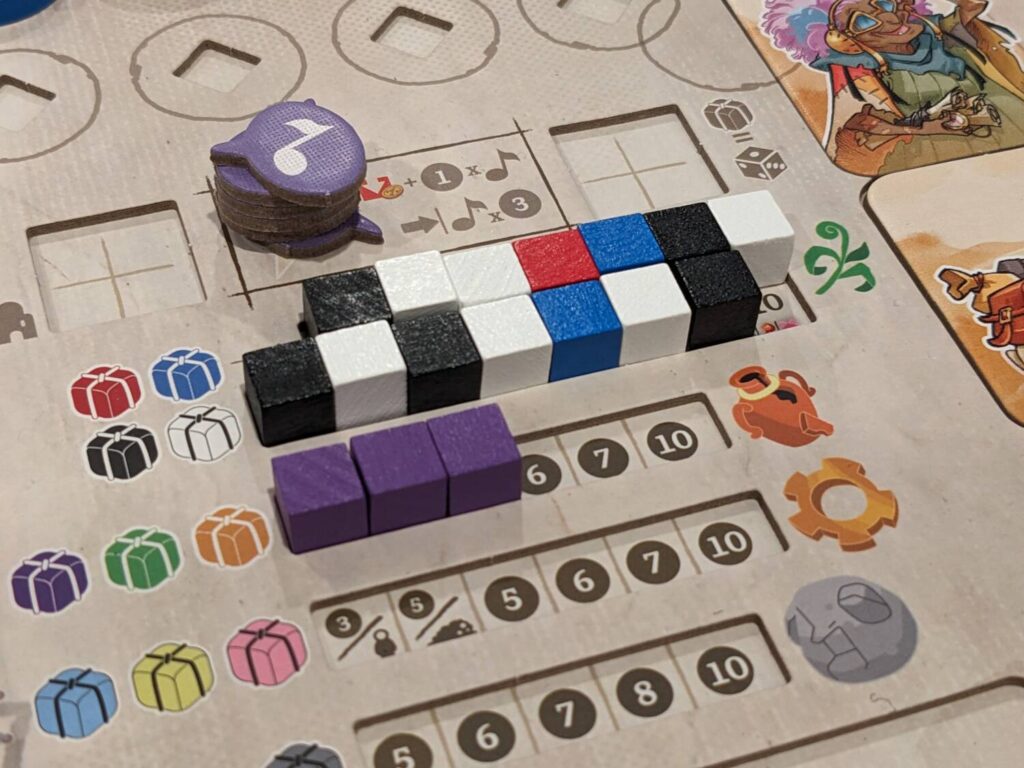
Snake Those Goods
Sand has a nice level of interaction thanks to a very limited amount of basic goods on the map. Turn order can be vital in this regard, because a player going first and sharing a location with a rival will lead to some fun exchanges (at least, they were fun for me) as you snake goods from right under the nose of another player who was hoping to pick something up for a delivery on their next turn.
Movement on the map is not restricted by opponent worms, so Sand is never about “can I get to XYZ location?” on a turn. Rather, it’s finding those nice efficiencies where you can math out your worm’s health, the distance required for travel, and having the right action markers to pick up goods on your turn.
And the race to score the most points is measured by balancing where to sell goods. I love that the craft goods (the ones slightly better than the basic goods) can be sold in any named location for four coins, or at the port for six coins. Maybe it’s more valuable to sell for full value at the port…but do I have the time to make a trip that far north on the map? Sometimes, the bonuses you can earn on your player mat outweigh the sale value at a suboptimal price.
Another thing I loved, that I thought would be minor but turned out to be major: goods delivery is a free action. Some pick-up-and-deliver games charge an action for this; not in Sand. You could use an action to pick up a red token, deliver/sell it for free, then pick up a blue good in the same location, deliver/sell it for free, then get nice bonuses from your player mat and free up all your actions for your next turn.
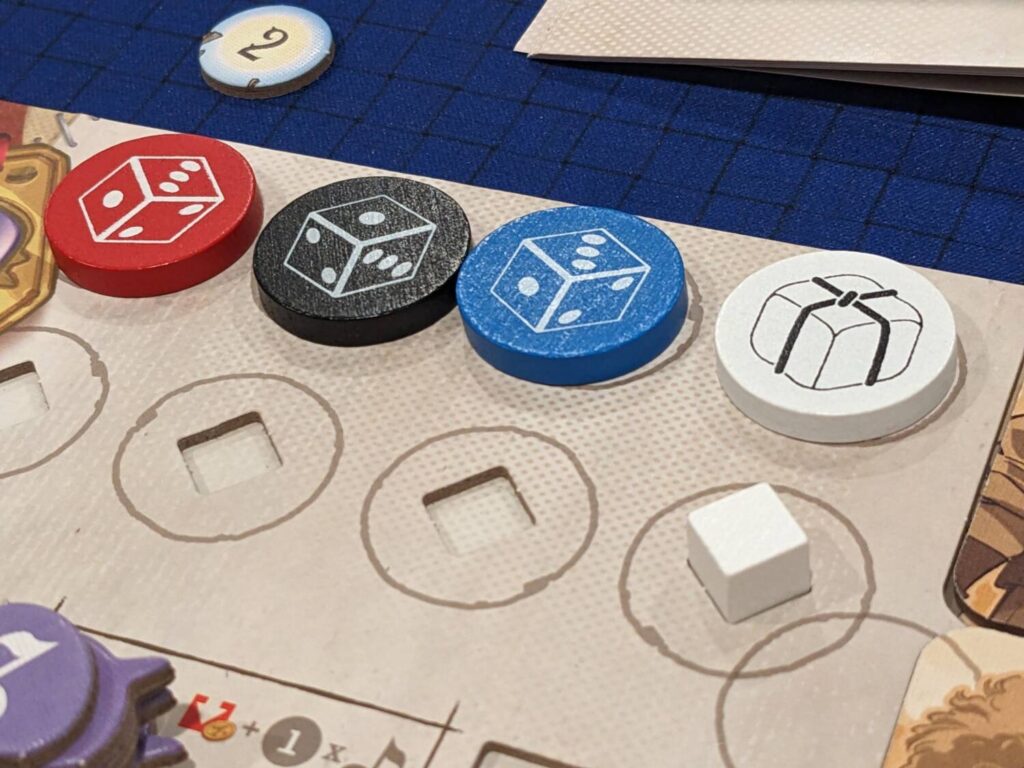
The Spice Didn’t Always Flow
There’s more, but some of the “more” isn’t to my liking in a game of this type. That starts with the song mechanic. One action available to all players in a named location is to Compose Songs. Using any action token, a player can drop a song token in their color at a named location. If there’s a song token from an opponent already in that town, the new song token takes the place of the old one, which returns to the previous owner.
During play, deliveries get a bonus of one coin per song token on the board (one bonus per delivery, not per good sold in that delivery). At the end of the game, whoever has the most song tokens on the map receives three points per song token, which maxes out at 18 points.
In each of my multiplayer games, the person who won the song token battle happened to win each game by exactly three points. This is a little strange—Sand is definitely 90-95% pick-up-and-deliver, with almost everything in the game tied to getting a worm around the map, picking up goods, and selling them for the highest prices. (Even selling lower-valued goods at camp locations generate a bonus that provides an end-game scoring boost, known as Minor Tribe tokens.)
Additionally, delivered goods trigger a bonus in almost every other area of the game except songs. So, you’ll find ways to upgrade your worm, get extra companions, earn more money, and earn bumps on the water/food/health/prayer tracks with delivered goods…but there are no ways to place song tokens for free. That leaves Compose Songs as a completely separate portion of play…but it is so valuable that it might win a player the game.
Initially, Compose Songs felt like a pass action to my groups; this game’s “I can’t do anything else, so I might as well compose a song.” And getting song tokens to stick is really tough—anyone can bump anyone else any time they come to that same town.
What I like about songs is mostly an idea, because this idea never happened in my plays—in a game of Sand where dice rolls are low, limiting travel, I like the idea that songs give players a chance to compete over something if they are short on cash and unable to move based on poor rolls shared by the table.
But I’d rather see the person with the best delivery engine wins. That wasn’t the case thanks to the Compose Songs action. (Even the game’s tiebreaker seems to agree that delivery is everything—the first tiebreaker is earned by the player who delivered the most basic goods.)
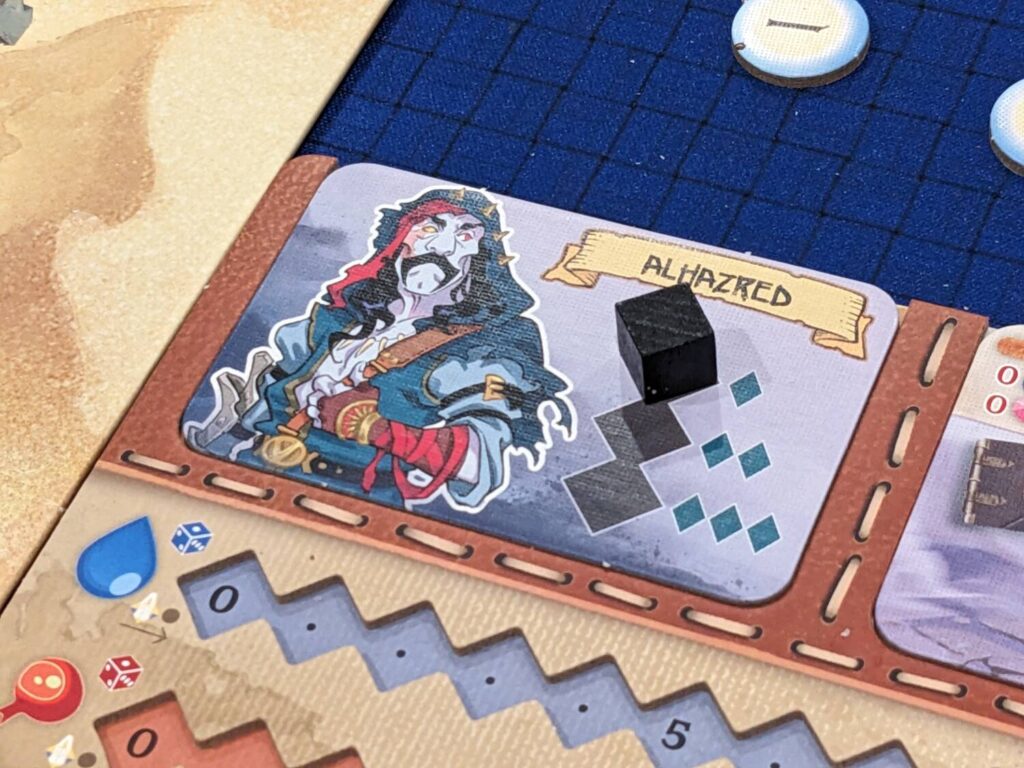
One other thing I appreciated more than I enjoyed: the variable player powers. Eight special characters, known as Desert Travelers, are included in the game as an optional play variant. The Desert Travelers are drafted in reverse turn order before play begins. The designers, Ariel Di Costanzo and Ernest Sala, recommend skipping Desert Travelers for your first game of Sand, and I agree, particularly because some of the characters utilize a storage area known as the Shelter which takes a bit of experience to understand and later maximize, in terms of efficiency.
My recommendation? Don’t use the Desert Travelers at all. Of the eight Travelers, four feel like they are significantly more useful and powerful than others. In one of my plays, a player used Narosh, who gets a pretty sweet bonus every time they take the “Care for Your Worm” action (yes, this does elicit childlike laughter every time someone utters these words). The Narosh bonus? An additional six bumps on the water or food track when healing, in addition to the amount equal to the value showing on the die. They also get four free bumps on the health track, a track that is much harder to heal thanks to the rules regarding dice for that action.
That means the Narosh player gets a bump of 12 water when using a six-pip blue die to heal up. That also means Narosh doesn’t have to heal their worm as often, which we found helpful for traveling the map on consecutive turns.
Narosh’s powers are not situational, as all players have to heal their worm, eventually. The Narosh player will have a 100% chance of being able to take advantage of these powers.
Surmesh, another Desert Traveler, has a great power—they can flip two of the four rolled dice just for themselves to use the value on the opposite face. So, if a round featured a poor roll with, say, three ones and a five, Surmesh (and only the Surmesh player) could flip two of those ones to sixes and take actions based on this new result.
In a round with low rolls, this might be the best power in the game. But what if, across five rounds, the dice are always rolled high (fives and sixes)? Yes, a game with mostly high rolls happened during my third review play. The Surmesh player was looking around like he didn’t have a power at all…because, well, he didn’t.
Two other Desert Traveler characters have powers tied to the use of the Shelter. One problem—the Shelter usually won’t come out until your second, maybe even third round if you don’t manage deliveries well early on. That means those players just don’t get any juice early in the game. Meanwhile, Narosh and Surmesh might be running laps around your supposedly high-powered delivery engine.
I like that the Desert Travelers are here, because some players will insist that variable player powers are the only way to enjoy this game. I disagree, but I like that they are an option.

Devir Keeps Winning
Devir was my publisher of the year for 2023, and it looks like they have taken the lead this year too. The Devir team continues to churn out loads of these “medium box” bangers that offer stellar production, relatively short playtimes (Sand was consistently at 30 minutes per player across my three plays), accessible rulesets, and games that really work for me, my wife, and my assorted playgroups, all in a package that can be found for about $40.
Sand, in the words of one player, is “solid.” It is not my favorite Devir game; in fact, I like the money-as-action-card mechanic of Salton Sea more than anything in Sand. But Sand just works. It looks great on the table and has so many great little touches, like a dice stand for the four chunky dice, great artwork on the city locations on the main map, a player board that opens like a book, and the worm/companion cardboard tiles have a great heft to each of them.
I like running around and grabbing items while considering how to grab more items and make more money. I’ve seen players sell goods to the port and win, and I’ve seen players sell low-value goods for a coin to quickly fill up their delivered goods tracks, which grants a ton of cash and bonuses on its own. At the end of each round, players can draft cards that can be used for a very minor immediate bonus or serve as a mission or milestone that can score more end-game points if the card’s condition is met by the end of play. This level of gambling/push-your-luck play can really boost scores, but comes with relatively zero risk.
Not everything worked. In addition to my gripes above, particularly with the variable player powers, I’m still not sure about the Shelter mechanic. I leaned into this for my final review play, and I still think it’s tough to manage a goods swap in a separate location because traveling is so expensive over the course of a full game.
The rulebook is…not great. The official teach video for Sand is good, and I watched that twice before reading the rulebook. That turned out to be smart, because even the rulebook acknowledges that it will be a challenge to learn from the written content there. 36 pages of rules for a game of this weight is simply unacceptable. There are a few in-game examples, decent pictures, a little backstory, and a useful icon guide on the back of the booklet. But the non-linear approach for this ruleset worked against the game. Even if you are not a visual learner, I recommend learning Sand from the teach video before using the rulebook as an in-game rules reference.
I also think four players is one player too many. I played Sand twice at four players for this review and I won’t make that mistake again. (My third play was solo. While I thought the solo AI was okay and easy to manage, don’t buy this game only for the solo mode.) Two, maybe three, players feels like the sweet spot for future plays, and two experienced players will regularly be able to play this game in under an hour.
Sand is good; the game held the #1 spot on the BGG Hotness List for a couple weeks and now I see why. The designers recently shared more about its development cycle, so I recommend checking out this link if you want to learn more. If pick-up-and-deliver games are your thing, give Sand a look!


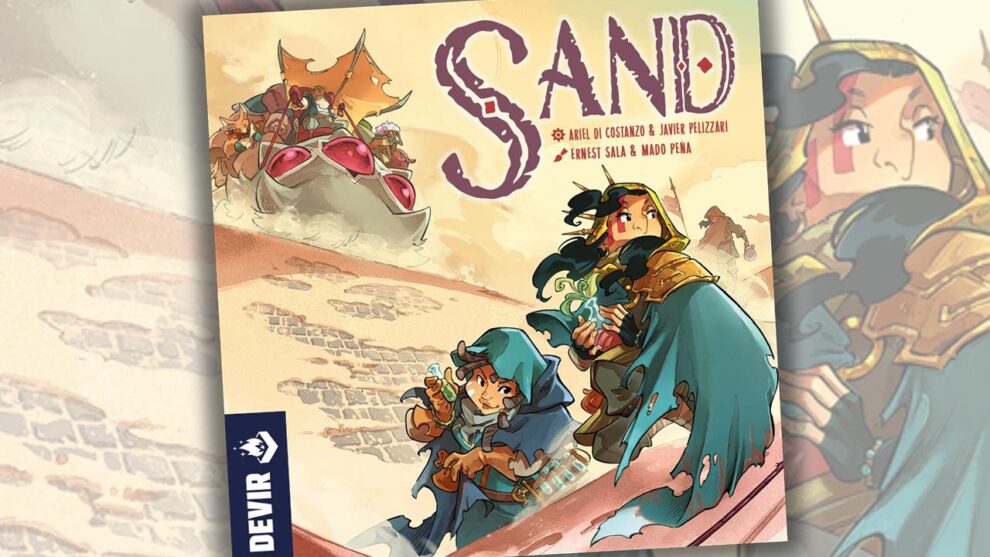


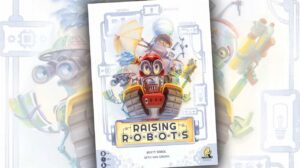
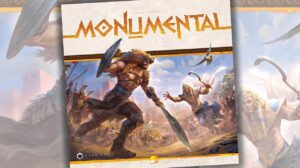





Add Comment